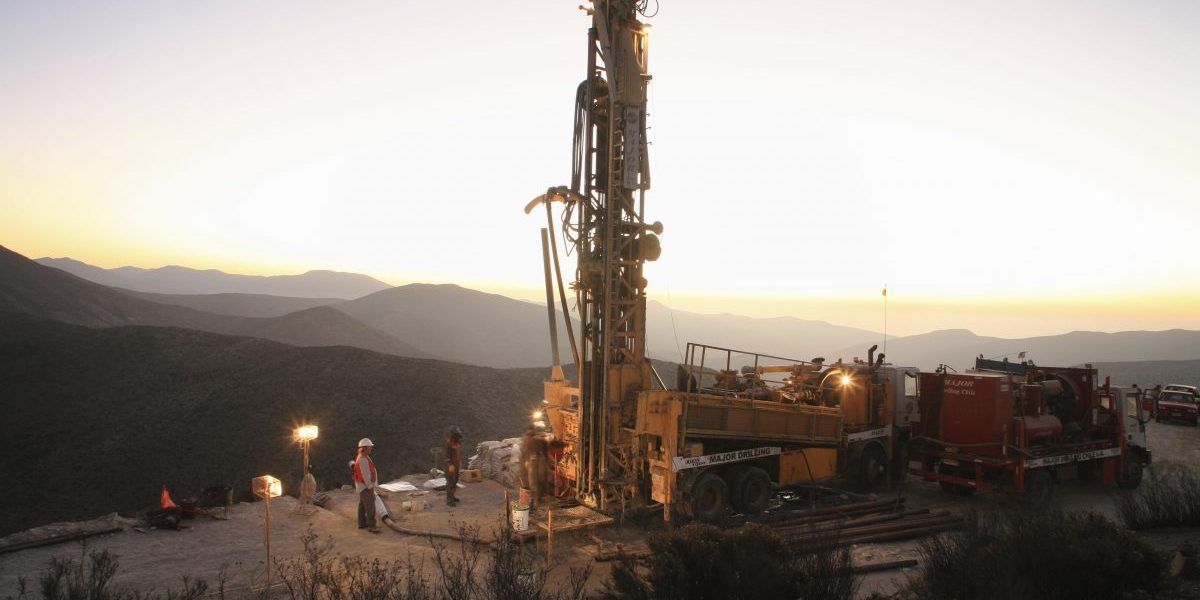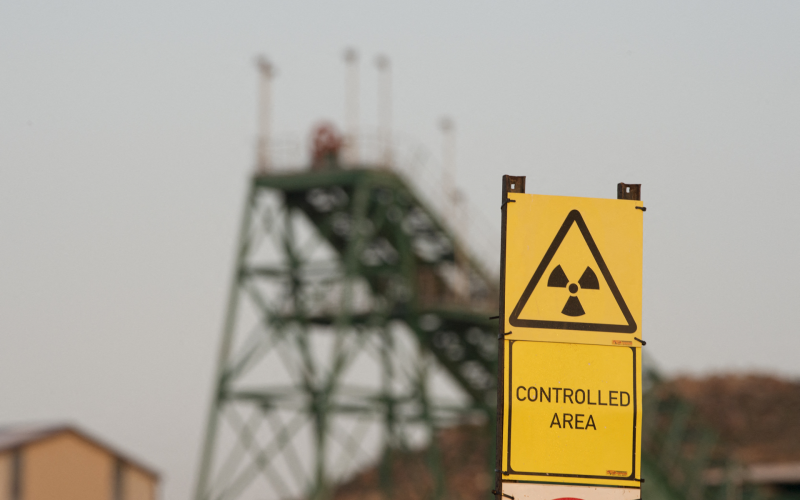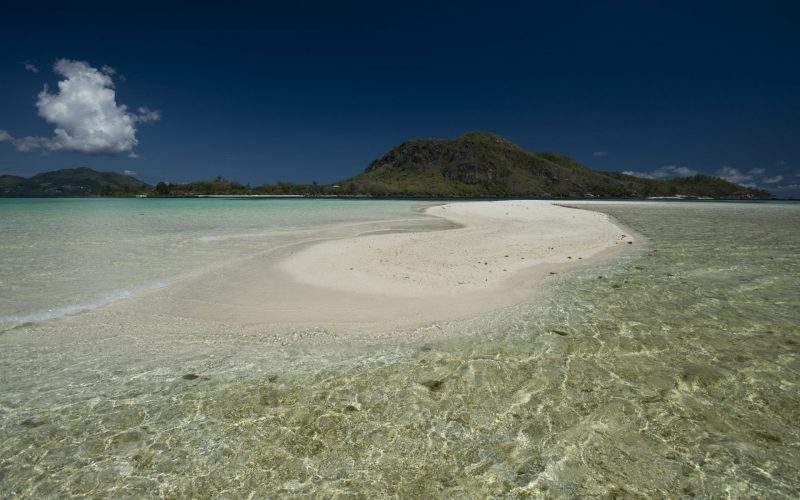Recommendations
- Ensure better engagement and integration with local governance structures and public institutions, including with a view to achieving improved direct and indirect impacts on local societal assets.
- Improve internal assessment of the governance capacity and available capabilities (internally and externally) needed to achieve these impacts and ensure that this is in place timeously to support the realisation of intended benefits to host countries.
- Tariffs, taxes and incentives need to take into account the real costs of sharing infrastructure and the capacity of the extractives company to bear these. The balance between fiscal income and access to infrastructure must be recognised.
- Negative direct impacts can largely be identified in the environmental and social impact assessment process, but indirect impacts – as well as the full nature of the positive impacts – can only be properly understood and responded to with a better level of internal capacity and a changed approach.
Executive summary
The quality and availability of transport and other critical infrastructure has been a major barrier to the development of world-class mineral deposits in Africa. When infrastructure is not available and the host government is unable or unwilling to provide it, extractive companies tend to build it for their exclusive use, with low levels of integration with host economies. To compensate for the depletion of natural assets, extractive companies should increase the human, productive, social, financial and commercial assets of the countries in which they operate. Sharing infrastructure may help to promote this by furthering socioeconomic development around extractive sites. Considering shared use during the design of infrastructure may also reduce the incremental capital cost to the economy and the impact on the environment.
Introduction
It has been argued that, in what are referred to as open access social orders characterised by inclusive public institutions, societies’ wealth grows in inclusive ways, as the development of particular asset classes (financial and commercial, human, productive, social and natural assets) appear to stimulate growth in others.1Frederick Bird, “The Practice of Mining and Inclusive Wealth Development in Developing Countries”, Journal of Business Ethics 135, no. 4 (2014): 631–643.There is thus a positive correlation between, for example, the development of transportation systems, communication networks, water reticulation systems, waste disposal systems and energy networks, and the development of other societal asset classes.2Bird, “The Practice of Mining”.
However, in most developing countries the situation is quite different. In these societies, characterised as natural state social orders, public institutions tend to ‘favour extractive, rent-seeking orientations towards all forms of assets’.3Bird, “The Practice of Mining”, 637.Here the links between various asset classes are looser and development in one frequently does not result in gains in others. Many of these countries have failed to convert resources into prosperity.4Richard Dobbs et al., Reverse the Curse: Maximising the Potential of Resource-Driven Economies (McKinsey Global Institute, 2013).
Furthermore, there is a negative relationship between levels of inequality, present in many developing countries, and growth.5Francisco Rodriguez, “Inequality, Redistribution, and Rent‐Seeking”, Economics & Politics 16, no. 3 (2004): 287–320.Exploitation of natural resources is also associated with adverse impacts on governance, particularly increases in corruption, reinforcement of authoritarian regimes and the emergence of violent conflicts.6Fernando Carvalho, “Mining Industry and Sustainable Development: Time for Change”, Food and Energy Security 6, no. 2 (2017): 61–77.
The socio-economic development potential of affected asset classes must be assessed when undertaking otherwise high-impact, large-scale projects such as mining. This potential is strongly linked to the nature of the local geography social orders and their linked public institutions. In this regard extractive companies have a critical role to play.7Bird, “The Practice of Mining”.
Resource-driven countries generally compare poorly with the rest of the world in terms of infrastructure, deterring investment. That a lack of infrastructure deters investment is unsurprising as the capital required to initiate projects is thus increased, reducing investment returns. The World Bank reported that sub-Saharan Africa faced an infrastructure funding gap of $31 billion over the decade from 2006–2016.8Perrine Toledano et al., “A Framework to Approach Shared-Use of Mining Related Infrastructure” (Columbia Center on SustainableInvestment, New York, 2014).At this point, it is important to ask why this would be the case and what, if anything, can be done by extractive companies to respond to this phenomenon. This briefing attempts to address some of these challenges, and suggests a number of important foci for companies aiming to reverse what is frequently referred to as the ‘resource curse’.
Large-scale mining and infrastructure
Cost, efficiency and reliability of pit-to-port logistics are critical determinants of a remote mine’s position on the cost curve. The quality and availability of transport and other critical infrastructure has been a major barrier to the development of world-class mineral deposits in Africa.9Paul Collier and Glen Ireland, “Shared-Use Mining Infrastructure: Why It Matters and How to Achieve It”, Development Policy Review 36, no. 1 (2018): 51–68.Many large mineral deposits that are yet to be developed in remote regions require major rail, port and power investments. For bulk commodities, the cost of such infrastructure may significantly exceed the cost of the mine and processing facilities.
When infrastructure is not available and the host government is unable or unwilling to provide it, the mine and associated infrastructure commonly fall under one owner – ie, the infrastructure is built by the mine for its exclusive use.
In the absence of existing infrastructure, mining companies tend to favour targets close to coastal sites suitable for seaport development, as only world-class deposits can support the cost of extensive new in-land transport infrastructure development. For the past decade there has been a growing trend of project developers offering to construct the required infrastructure to alleviate the pressure on host governments with limited infrastructure
investment.10Erik Reed and Marta Miranda, Assessment of the Mining Sector and Infrastructure Development in the Congo Basin Region (Washington DC: World Wildlife Fund, 2007).
Use of state-owned and -operated public infrastructure is attractive when host governments have the capacity to fund and manage delivery, pay compensation in the event of delay, and ensure reliable operation of the infrastructure as well as competitive and stable access tariffs. The cost of expanding the capacity of existing infrastructure is significantly lower than constructing new infrastructure of equivalent capacity. An alternative arrangement is operation/ownership of infrastructure by a third party that is independent of other users such as the mine or government.
What has happened historically: Development in island mode
To ensure reliability, extractive companies have historically adopted an enclave approach to infrastructure development with low levels of integration with host economies. Where the infrastructure has not been provided by the state, they have provided their own water, power, communications and transportation services.11Toledano et al., “A Framework to Approach”.Mines provide limited local job opportunities, some returns for local investors and revenues for government, but the mining operations themselves are seldom integrated with the national economy. This has fostered exclusive forms of wealth development compounded by a lack of coordination with national infrastructure and socio-economic development plans, with the consequent loss of synergies associated with shared use.12Bird, “The Practice of Mining”.This reinforces the negative reputation of extractive companies in developing countries as contributing little, hence the enduring references to the ‘resource curse’. Duplicating logistics infrastructure may confer significant fixed costs and potential inefficiencies – consequently, the first mover has a considerable competitive advantage in the absence of access regulation.13Collier and Ireland, “Shared-Use Mining Infrastructure”.This absence discourages third-party investment in the region serviced by the infrastructure.
Companies increasingly realise that, to obtain a licence to operate, they will need to better
manage their adverse impacts. Additionally, incidents of company–community conflict in developing countries have been on the increase for at least the past 20 years.14International Council on Mining & Minerals, Research on Company–Community Conflict (London: ICMM, 2015).This phenomenon is occurring alongside increased international scrutiny of companies’ human rights track records and a global demand for improved private sector environmental and social governance (ESG) performance. As a result, there is greater pressure on extractive industry companies to demonstrate their willingness to do better, especially by way of visible contribution to the local economy and inclusive growth. Therefore, more and more time has been spent engaging with stakeholders, especially local communities, as a means of mitigating negative impacts linked to extractive operations. There are increasing investments from extractive companies in local schools, clinics and community projects. These efforts towards improved ESG performance, however, still fall short of addressing the ultimately depleting nature of mining. Mining companies are ‘de facto reducing the actual mineral wealth of nations affected’,15Bird, “The Practice of Mining”, 632.with little demonstrable positive impact in other societal asset classes, particularly those pertaining to socio-economic development.
Shared use of infrastructure
The potential benefits of shared-access infrastructure are significant. Furthermore, resourcerelated infrastructure was expected to require a cumulative investment of up to $2 trillion in resource-driven countries in the two decades leading up to 2030.16Dobbs et al., Reverse the Curse.Sharing infrastructure takes advantage of private sector capital and expertise, builds stable and long-term partnerships with extractive companies, and provides broader social benefits from the infrastructure. Dobbs et al. claim that:17Dobbs et al., Reverse the Curse.
- 70% of investment in resource infrastructure could be shared among different operators, with the largest opportunities being power in mining regions and pipeline in oil regions; and
- the remaining 30% can potentially be shared with other users (eg, power to the grid, public access to mine roads, etc.).
In remote contexts with large mineral deposits, rival mining companies may, however, not be willing to share access without regulatory pressure to do so, because:18Toledano et al., “A Framework to Approach”.
- they compete to supply different ore grades and a second mine nearby (with similar ore) may be able to undermine the competitive advantage of the first;
- negotiation may be at corporate rather than project level;
- monopoly power on infrastructure can be used to acquire additional concessions in the region at a lower price; and
- large projects can influence market prices and it might be in the interest of companies to restrict supply.
Different types of mining-related infrastructure may be more or less amenable to shared access. Sharing of railways may be very costly, whereas sharing information and communications technology infrastructure is likely to be inexpensive.19Toledano et al., “A Framework to Approach”.For the government, it may be worth looking at policy-driven incentives like foregoing tax revenues for shared use of rail, ports and power if there are economies of scale and if a real market for the capacity exists. Where no scale or market exists, it may be better to have the mining company pay a smaller amount to provide cell phone coverage and drinking water to surrounding communities. Under these conditions, governments could retain higher tax revenues and takeover rights for transport infrastructure at the end of the concession period.20Toledano et al., “A Framework to Approach”.
How the industry can do better
To compensate for the depletion of natural assets, extractive companies should explore ways of increasing the human, productive, social, financial and commercial assets of the countries in which they operate.
A key to successful extractive industry outcomes is better integration with the local contexts within which they operate, particularly with communities. This may be achieved through, among other things, participating in social development, respecting human rights and addressing poverty.
Sharing infrastructure may facilitate further socio-economic development around extractive sites. New rail and port infrastructure is typically ‘non-rivalrous’ – until capacity reaches full utilisation, the marginal cost of providing access to new users is low.21Collier and Ireland, “Shared-Use Mining Infrastructure”.It may also be suboptimal to duplicate transport infrastructure due to adverse environmental/social impacts and the inefficient allocation of capital to create unneeded/excess capacity. Such facilities generally require public ownership or regulations to deter monopolistic pricing and other predatory behaviour. Companies are more likely to share where the potential for economic development associated with multi-purpose access is higher. This will also help to maintain their social licence to operate.
Some countries have been more successful at capturing the benefits of their own resources sectors. Dobbs et al.22Dobbs et al., Reverse the Curse.identify six core elements that can be identified as enabling factors:
- building the institutions and governance of the resources sector;
- developing infrastructure;
- ensuring robust fiscal policy and competitiveness;
- supporting local content;
- deciding how to spend a resources windfall wisely; and
- transforming resource wealth into broader economic development.
Several of these factors point to the critical need to strengthen local governance and public institutions. It is also crucial to establish robust and constructive engagement platforms between companies and the local, national contexts within which they operate, including what Bird refers to as ‘provincial or national webs of commerce’.23Bird, “The Practice of Mining”, 633.Extractive companies must refocus from simple extraction to longer-term partnerships with host governments and institutions that will yield sustained benefits and inclusive growth for developing countries.24Dobbs et al., Reverse the Curse.This will require, for instance, going beyond existing environmental and social impact assessment processes, mostly initiated at project inception, when it comes to analysing, engaging, implementing and maintaining the interventions aimed at mitigating negative indirect impacts and achieving inclusive growth.
As projects are initiated in developing countries, extractive companies should collaborate with local government, local businesses and civil society to implement the physical, social, economic and legal infrastructure required to enable inclusive growth.25Bird, “The Practice of Mining”.Such infrastructure becomes public goods and may provide broadly shared institutions that make it possible for individuals, households, businesses and civic associations to pursue their activities. This forms the basic structural foundation of society that should expand as economies grow.
This will require companies to develop a set of skills internally that are still quite rare in the sector. It is noteworthy that some of the currently emerging recommendations for the most critical competencies and skills needed by companies to move towards a more positive and sustainable impact on resource-rich developing countries include such diverse fields as:26ICMM, ICMM Social Performance Landscape Report (London: ICMM, 2019), 67.
- international, regional and local socio-economic development;
- political economy analysis;
- social impact assessment and management;
- human geography;
- human rights;
- advanced stakeholder engagement, including conflict resolution and mediation; and
- several specialist subject areas such as social closure, livelihoods and local content.
Infrastructure for extractive projects is mostly still developed as de facto private good. This reinforces patterns of inequality, frequently leading to increased rent-seeking by local elites and public sector corruption. To avoid this, the required infrastructure should be developed as public goods, ie, developed with the intent to enable regional and public utilisation instead of local private utilisation that benefits only the extractive industry. In this way the extractive industry infrastructure can benefit a much larger population, directly and indirectly, as other asset classes are developed. The consequence is that the mines become more economically and socially integrated in their host societies and help to expand the productive, commercial and social assets of those societies.
A product of this integration is that resource-dependent countries are then also able to contribute to societal responses to broader economic transformation imperatives, such as those that have resulted from climate change and its impact on policy-level changes in recent years.
A good example of how extractive companies can play a critical role at the country and local level is the implications of the recent South African government emergency policy intervention to allow private investors and companies to generate (and sell) up to 100 MW in electricity without a generating licence. This is meant to ease the country’s current energy crisis. At the same time South Africa is embarking on a Just Energy Transition (JET) towards a sustainable, low-carbon and equitable energy system. Extractive companies can therefore simultaneously reduce their operating costs, provide additional energy to the national grid, and contribute to the country’s JET as part of their own closure planning.
Considering shared use during the design of infrastructure (and expanding the planned private sector investments accordingly) reduces the incremental capital cost to the economy and the impact on the environment. The sustainable development dividend can be maximised, improving levels of trust around the potential contribution of mining to development.27Toledano et al., “A Framework to Approach”.
Third-party infrastructure owners may provide risk diversification to project funders. Political risk may also be reduced if host communities and governments get shared use of infrastructure, leading to increased rents or more broad-based development.28Collier and Ireland, “Shared-Use Mining Infrastructure”.
The African Mining Vision argues that mineral transport infrastructure should allow thirdparty access at non-discriminatory tariffs to achieve broad-based development around resource corridors. Third-party access may increase costs to the infrastructure owner, but may also increase the state’s share of resource rents, promote broad-based economic development, increase domestic participation in the minerals sector and diversify the host country’s foreign investor base. If access regulation costs are unfairly borne by infrastructure owners, they can be compensated through higher access tariffs, payments by the host government or other mechanisms. Open access regulation requires tariffs that are fully cost reflective.29Collier and Ireland, “Shared-Use Mining Infrastructure”.
Governments can tailor their requirements of mining companies, for example, requiring excess capacity and allowing multi-user access to infrastructure. Where this comes at significant cost to the company, governments can reduce other costs (such as taxes). This depends on whether a government can use its fiscal receipts to greater effect than can be achieved by required shared access to infrastructure.30Toledano et al., “A Framework to Approach”.
Conclusion
Extractive industry companies currently have a history of exacerbating the ‘resource curse’, where resource-rich developing countries are frequently left worse off as result of the exploitation of their resources. This is strongly linked to weak local governance and institutions, as both a causal and contributing factor.
There is significant global pressure on extractive companies to improve their performance in developing countries, including from an ESG, sustainability and human rights perspective.
Infrastructure development by extractive companies has the potential to create shared benefits and inclusive growth in developing countries, but only if these companies are able to unlock this opportunity with the necessary care and consideration for the local contexts within which they operate, including their level of engagement and integration with local governance structures and public institutions.
In this regard, host country governments have a role to play in terms of: 31Dobbs et al., Reverse the Curse.
- planning early for shared-use of infrastructure;
- assessing costs and benefits of sharing – economies of scale, potential costs related to contracts, and difficulties in coordination; and
- selecting the right sharing model: strong regulatory capacity is required to provide incentives to invest without the promise of unreasonable returns that impose large costs on the host government.
Acknowledgement
SAIIA gratefully acknowledges the support of the Swedish International Development Cooperation Agency (SIDA) for this publication.








